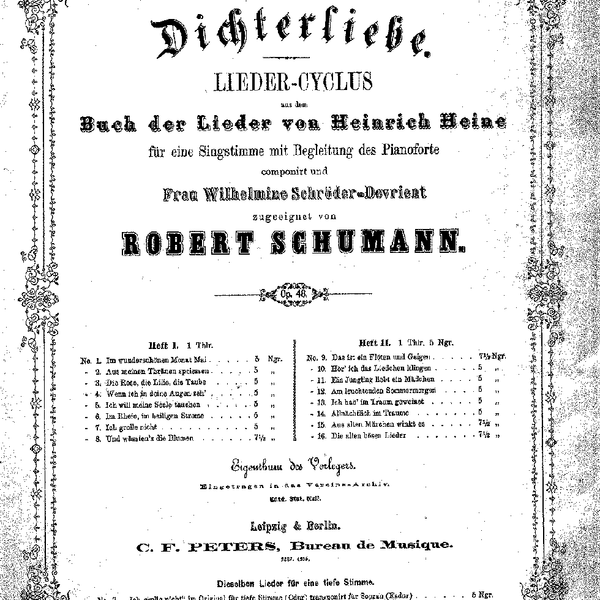Medieval Europe saw great changes across many different areas of study, and music was no different. Notation of both pitch and rhythm made huge advancements in a relatively short time span of a few hundred years from the ninth century to the fourteenth century. Written music went from being used primarily as a memory aid to something that was fully composed and could be sight-read. The need for prescriptive rather than solely descriptive notation came with the movement from memory aid to self-contained composition. However, there were simple beginnings for the notation of pitch and rhythm, just like anything else.
Music notation in Medieval Europe began humbly in approximately the ninth century as lines of dots, dashes, and slants, called unheighted neumes that were very approximate to say the least. They told the reader very little about the actual music, and this is one reason why neumes, whether heighted or unheighted, were used only as a memory aid for those who were new to and trying to absorb the oral tradition of the church in monastic communities. The three symbols that were used could mean various things simply depending on the symbol and the context. One example is the horizontal dash. The horizontal dash could mean that the note was going down or that it was a group of notes that stayed the same. These symbols also did not have a way that they specified particular pitches and rhythm, but instead focused on how the voice was supposed to move. Notation continued on in this way for a little while until around the eleventh century when heighted neumes were introduced as a way to show relative pitch and give more of a visual representation of the musical line itself rather than relying so heavily on memory. At this time, even with the slightly more specific notation, there was still very little information given to the reader that would make this system suitable for anything other than a memory aid among those who generally knew the music already and were able to identify what the pitches and rhythms were meant to be for each piece. However, substantial change was beginning to peak over the horizon.
Around this time in the eleventh century, music notation using a simplified version of today’s staff began to show up. These staves began with one or two staff lines that helped further differentiate pitches and aided in the specificity of where they were located. The lines that were usually used for early staff notation were middle C and F3. While the addition of the one or two staff lines were great, a man named Guido of Arezzo came into the picture and thought that there was a way to again improve upon the musical notation system. He helped not only music notation to take the next big step, but he also helped to advance learning devices and musicianship in general when people started to become concerned with wanting to learn music and to improve their technique. Guido is generally credited with the creation of the four line staff, which greatly increased the ability to read and decipher music accurately, even if the person singing it had not necessarily seen it before, thus bringing about the early beginnings of actual composition and sight reading. The full five line staff that is known and used today would come around a couple hundred years later in about the thirteenth century.
Although the four line staff was a big victory in the battle for progress towards more precise and better pitch notation in particular, rhythmic notation was fighting its own battles to become more specific and easier to understand as well. In the beginnings of notation, there was even less information provided about the rhythm of the pitches than the pitches themselves. Unheighted neumes really had no definitive way to show rhythmic values and the difference between them. When heighted neumes came about, there still was not anything that was especially informative about the way the music was written in regards to rhythm, but the shapes that the neumes were written in seemed to provide some sort of basic guideline for what values were intended. It was not until about the thirteenth century that regular rhythm was introduced and ways of understanding it were beginning to make the rounds. It originally started with things usually being divided into threes, since sets of three were seen as perfect. The first units of time were called a tempus and when they were grouped into threes, they were called a perfection. These groups were then divided into patterns of longs and breves to create certain rhythmic modes that would demonstrate certain stresses. These rhythmic modes and the system of long and short values would become the basis for the mensural notation of the fourteenth century that could be broken down into two kinds of triple meter as well as two kinds of duple meter. These breakdowns of time and prolation also lead to the first time signatures, which were called mensuration signs at the time.
In the time span of only a few hundred years between the ninth and fourteenth centuries, pitch and rhythmic notation made enormous leaps and bounds in progress. Music went from being something that people only learned by ear and could read only if they knew the music itself already to being able to look at the notation and sing accurately based on what was written there even if they did not know the music by ear beforehand. Although the fourteenth century does get one closer to modern notation, there is still a pretty significant way to go historically until notation becomes as fully prescriptive as it is today, but that is not to say that the progress made was small by any means. If anything, this progress is extremely important to modern notation as it is known and practiced today.




















